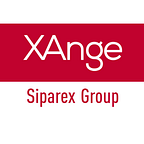Autonomous vehicules : Pedestrians are not to be left behind !
There’s no debate about it: autonomous vehicles will become widespread. Oliver Wyman’s report Autonomous Driving: between fiction and Reality estimates that more than $2.7 billion have already been invested in R&D. And according to RethinkX, when the autonomous car market will come to maturity (scheduled for 2030), it will give way to a new concept: Transport as a Service (TaaS). A service that should wipe out approximately 200 million vehicles off the roads of the United States — considering that 250 million are on these roads today.
Faced with this unprecedented upcoming turmoil, the automotive industry is getting organized: Ford, PSA or Toyota and their suppliers such as Continental, Faurecia and Valeo are multiplying their announcements. The Tech giants, for their part, see this change as a unique opportunity to capture even more value and growth. This is the case for Apple, Google, or even Uber. While startups like Bestmile or Xee are positioning themselves on new market needs.
Everyone’s eager appetite to capture shares of a market that will be worth more than 500 billion euros in 2035 (according to A.T. Kearney) is quite legitimate. It’s even exciting!
But this excitement mustn’t bypass one of the major issues raised by a widespread use of autonomous vehicles on our roads: how do we ensure the safety of pedestrians? And more generally speaking, how do we deal with the safety of any person who is (or may be) in the vicinity of a car, an industrial vehicle or public transport? Startups are already working on these issues. Their results are convincing and public initiatives are also emerging. Here’s an overview to catch the picture:
Autonomous cars
OS manufacturers and car manufacturers must incorporate safety modules to prevent the risk of collision — the main symbolic purchasing obstacle facing an average consumer.
There aren’t that many players on this specific segment: Nexyad, a young French startup or Mobileye, a now-huge Israeli start-up created in 1999 and bought by Intel for $15 billion. Mobileye convinced some twenty global manufacturers when it was still only a small startup. This company is committed to the safety of pedestrians by detecting them with an optical system to avoid collisions.
Pedestrian detection systems undeniably raise numerous ethical issues with regards to liability, in the event of a collision. Who is responsible: the car? The OS? The safety system? What are the rights and duties of robot vehicles?
Public transport in the smart city
At the 2017 ‘Robotization’ conference recently held in Paris, several smart city players raised the issue of pedestrian safety as a new challenge for autonomous vehicles, particularly in the field of public transport. Dr. Martin HUMENBERGER, from the Austrian Institute of Technology (AIT) presented a tool called “the 3D Multi-view Reconstruction”. The system, through combined optical solutions, is able to detect a foreign body located on the tracks or crossing them. This generates an alert and a feedback mechanism, such as stopping the tram.
Since the month of March, in the Paris region, the STIF (French State Transport Authority) and the city of Issy-les-Moulineaux have been testing a number of technological solutions for public transport, as part of a call for projects launched by the “Société du Grand Paris”. These solutions can now be found in almost all Smart City calls for projects when it comes to urban transport.
Vehicles in industry and agriculture
Vehicles operating on construction sites must meet many safety standards. Despite these measures, tens of thousands of fatal accidents take place each year. But this situation is taboo for companies in these industries. With this in mind, Patrick Mansuy and Franck Gayraud developed Blaxtair: a very resistant stereoscopic camera device, linked to an artificial intelligence system fed by a database. It is the only system that distinguishes an object from a human being, in all settings — particularly in obstructed, dark environments with unstable elements (such as mines, tunnels, civil engineering sites, agricultural settings, etc.). This technology already saves hundreds of lives each year, particularly on construction site vehicles. The human, social and economic impact is considerable.
Blaxtair, Mobileye, Xee, Nexyad etc. these startups play a key role with all mobility stakeholders (companies, communities, legislators, regulators and the general public). They need to make them understand that there are risks in any technological innovation based on Artificial Intelligence, and that these risks need to be prevented.
To avoid any misunderstandings: more security does not mean less productivity. All these security-driven innovations actually make these machines more autonomous and safer, thanks to the information-based devices for drivers.
At XAnge for instance, we invested in Blaxtair because we believe in the relevance of artificial intelligence and machine learning, in industrial contexts. With this technology, human beings remain central to the industrial activity, and technology, in a way, remains at the service of people. Actually, Blaxtair partly inspired the ‘XAnge Impact’ fund range that supports ‘Tech for Good’ since 2009.
…Nothing beats the vaccine effect: in order to control the technological risks induced by the advent of autonomous vehicles, inoculating some Tech to prevent the negative effects of Tech is a real option. More Tech to prevent Tech…
